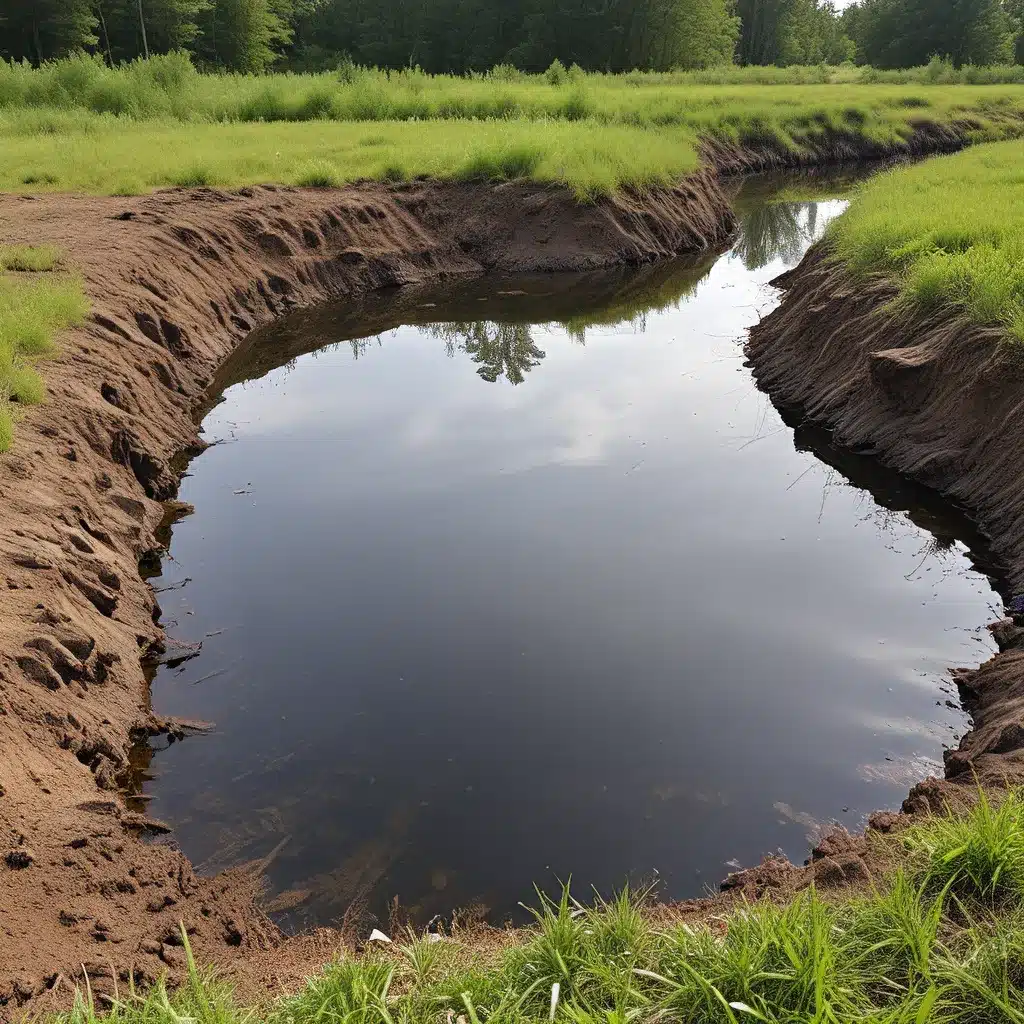
Unleashing the Power of Microbes: A Sustainable Solution for Wastewater
As the world grapples with the daunting challenges of water scarcity and environmental degradation, I’ve stumbled upon an intriguing solution that’s been hiding in plain sight – the amazing power of microbes. That’s right, the tiny organisms that are often overlooked or even feared can actually be our greatest allies in the fight for cleaner water and a healthier planet.
Let me tell you, I was just as skeptical as you might be at first. I mean, how could something so small make such a big difference? But after delving into the latest research, I’ve come to realize that these microscopic marvels hold the key to revolutionizing the way we approach wastewater treatment. It’s like discovering a whole new superpower that’s been there all along, just waiting to be unleashed.
Microbiome Stewardship: The Path to Ecological Restoration
One of the driving forces behind this exciting development is the concept of “microbiome stewardship.” Simply put, it’s all about understanding and harnessing the incredible power of the microbial communities that exist within our environments. These intricate networks of bacteria, fungi, and other microorganisms are the unsung heroes of our planet, playing crucial roles in maintaining the delicate balance of ecosystems.
As scientists have revealed, when these microbial communities become disrupted or out of whack, it can have devastating consequences for the entire system. Think of it like a domino effect – one small change can ripple through the entire ecosystem, leading to a cascade of problems.
But here’s the exciting part: by carefully managing and manipulating these microbial communities, we can actually reverse the damage and restore the natural balance. It’s like a secret superpower that’s been under our noses the whole time. And the best part? It’s a sustainable solution that works with nature, rather than against it.
Probiotics and Microbiome Transplants: Restoring Ecological Harmony
So, how exactly do we harness this microbial magic? Two key strategies have emerged as promising frontiers in the world of bioremediation: probiotics and microbiome transplants.
Probiotics, as you may know, are live microorganisms that can be introduced into a system to promote the growth of beneficial bacteria and displace harmful ones. Imagine it like bringing in a team of superheroes to save the day. By carefully selecting and cultivating the right probiotic strains, we can tailor the microbial community to address specific environmental challenges, whether it’s cleaning up polluted water or restoring the health of a struggling ecosystem.
But the real game-changer might be the concept of microbiome transplants. Much like the groundbreaking work being done in human healthcare, the idea is to take a healthy, thriving microbial community from one environment and transplant it into a compromised one. It’s like performing a microbial organ donation, and the results can be truly remarkable.
Imagine a coral reef that’s struggling to survive due to the impacts of climate change or pollution. By carefully selecting and transplanting a microbiome from a resilient, healthy coral, we can potentially kickstart the recovery process and help the entire ecosystem bounce back. It’s a fascinating intersection of ecology, microbiology, and even a touch of medical science.
Overcoming Challenges: Navigating the Complexities of Microbiome Stewardship
Of course, as with any revolutionary approach, there are challenges to overcome. Microbiome stewardship is a complex and delicate science, and we need to be mindful of the potential risks and unintended consequences of our actions.
For example, introducing a new probiotic strain into an ecosystem can have ripple effects that we may not fully understand. What if it outcompetes native microbes, leading to a loss of biodiversity? Or what if it inadvertently helps the spread of a harmful pathogen? These are the kinds of questions we need to grapple with.
And then there’s the challenge of regulation and safety protocols. As with any new technology, we need to ensure that these microbiome-based interventions are thoroughly tested and evaluated before they’re deployed in the real world. It’s a delicate balance – we want to move quickly to address pressing environmental issues, but we also need to be absolutely certain that we’re not making things worse in the long run.
Forging Ahead with Caution and Collaboration
But I’m optimistic that we can overcome these hurdles. By working closely with scientists, policymakers, and community stakeholders, I believe we can find a way to harness the power of microbes while carefully managing the risks. It’s going to take a collaborative effort, but the potential rewards are too great to ignore.
Imagine a future where wastewater treatment plants are powered by thriving microbial communities, efficiently breaking down and removing harmful pollutants. Or envision a world where we can revive struggling ecosystems by strategically transplanting resilient microbiomes – a true ecological restoration powered by nature’s own hidden heroes.
At Inland Waters Inc., we’re already working to stay at the forefront of this exciting field. Our team of experts is constantly exploring new ways to leverage the incredible potential of microbes, all while ensuring that our solutions are safe, sustainable, and beneficial for the environment.
So, who knows? Maybe someday soon, the unsung heroes of the microbial world will become household names, celebrated for their crucial role in preserving the health of our planet. It’s a future I’m eager to be a part of, and I hope you’ll join me on this remarkable journey of discovery.


